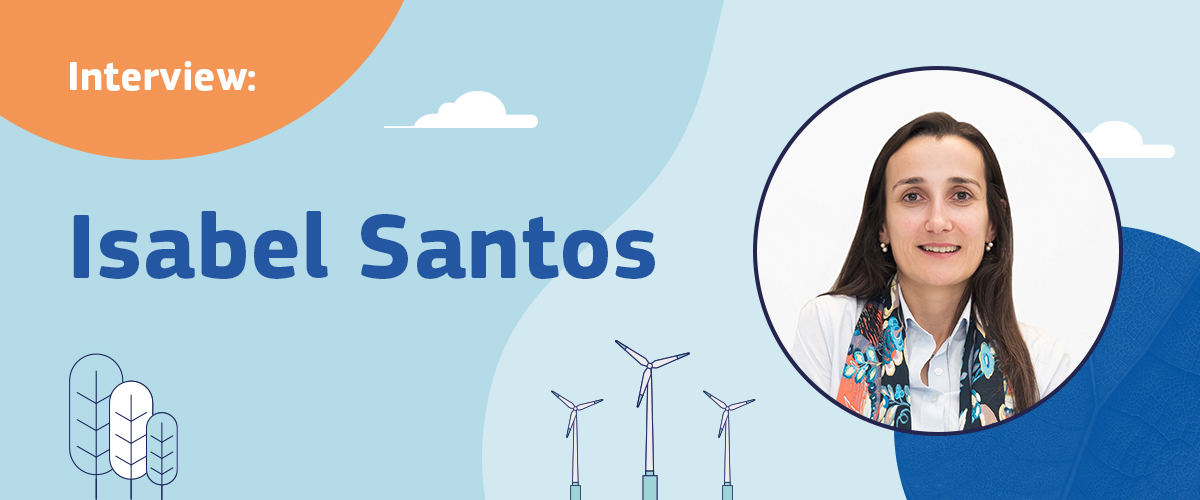
You mention that Greenlab is already applying the Level(s) framework for its clients and projects. Can you explain how you have introduced the framework into your work?
Greenlab started to apply the Level(s) methodology in order to be at the forefront of European demands and innovation. We believe it will be the future of communication and information transparency regarding sustainability in construction, not only in Europe but worldwide. We believe this tool can complement certification frameworks and tools in the market.
The Level(s) framework, as a common language and free, voluntary tool for sustainability reporting and transparency, has great alignment with EU policies and initiatives, namely, the EU’s climate change mitigation strategies, such as limiting energy consumption and CO2 emissions along a building’s life cycle. Additionally, it has been increasingly integrated and institutionalised into several international sustainable building certification schemes, such as LEED, BREEAM, DGNB and others.
Aiming to disseminate Level(s) within our reach, Greenlab has introduced Level(s) into internal staff training ‒ through EU Academy enrolment and certification, and with the University of Minho, our longstanding partner. As a consequence, we have presented Level(s) in external training and conferences, and among existing and prospective clients and projects, as a complement or alternative to voluntary market certifications.
Could you tell us how you have applied Level(s) to a specific project and tell us which indicators you have found most useful? Do you already have any results you can share?
Since 2022, we have started to provide our team with these skills, introduce this framework to our clients, and set up a team. We do yet not have significant data to share as we only started to apply the Level(s) framework in 2023. Nevertheless, we are now qualified to develop and apply this methodology in Portugal or in other European countries.
We are currently applying the 16-indicator Level(s) framework to two residential projects in the Lisbon Metropolitan Area. We expect to soon publish the first results of the two projects: firstly, in November 2023, a Level 1 report for a project in which we have worked with all stakeholders from scratch; and secondly, by the start of 2024, a Level 2 report of a project going through design development.
For the purposes of Level(s) reporting and project sustainability development, one major priority of the first project, followed since its early concept design, has been occupant welfare. The project selected targeted indicators reflecting this objective: Operational energy, Operational water and Indoor air quality, as well as Thermal, visual and acoustic comfort, and Adaptation and resilience to climate change macro-objective indicators (including Level(s) indicators 5.1, Protection of occupier health and thermal comfort, and 5.3, Sustainable drainage).
In addition to this indicator set, Level(s) indicator 2.3, Design for adaptability and renovation, has brought much attention from the project’s investors, architects, and mechanical, electrical and plumbing designers. Namely, one developer will adopt Level(s) for all projects they have planned in Portugal and will work with Greenlab on six future residential projects, starting in 2024.
Greenlab has been a frontrunner in the Portuguese sustainable buildings market for 15 years. How has Level(s) changed and evolved the work you have been doing historically?
Greenlab has been the market leader in Portugal, with the highest number of projects developing sustainability solutions for the built environment since 2007. Aligning with market demand and expectations, naturally our initial approach focused on national and international building sustainability certifications, bioclimatic and passive design analysis, and Environmental Product Declarations for construction materials.
As sustainable initiatives and policies evolved, this allowed us to grow in other areas and business segments, such as corporate sustainability, carbon neutrality and sustainable project management. Alongside Level(s), our work now covers assessment and certification methods such as LEED, BREEAM, WELL and SBTool, life-cycle assessment and costing, and environmental, social and corporate governance.
Our ultimate goal is to reduce the potential environmental impact of all our projects. As such, we aim to implement the Level(s) framework in the Portuguese market as an extension and natural evolution of the work we have pursued over the last 15 years.
With regard to Level(s), our work has evolved into several complementary scenarios to adopt this methodology: firstly, as a complement to voluntary market certifications (LEED, BREEAM, WELL); secondly, as a support to project management and sustainability strategy development, according to Level(s)’ 16 indicators; and last but not least, as a robust and detailed construction life-cycle assessment methodology, which we also develop for our clients.
We believe that the Level(s) methodology is more democratic in the way it allows the technical evolution of specialised teams in sustainable construction and the agility of real estate developers in presenting sustainability information to their clients.
You work a lot with real estate investors in particular. What would your message be to them when it comes to embracing Level(s) and sustainability in general?
The first step is really to start early: get involved and do not leave everything to design teams, because it is not just a matter of the technical approach. The guidelines and willingness to change must come from the leadership. Go beyond national regulations and set your own, ambitious benchmarks. Close the information gap, focus on the long term – i.e. whole-building life-cycle impacts and life-cycle costs – and establish bridges between sustainability design options, value creation and risk factors.
The Level(s) framework is a flexible system. It can be applied at each stage of a building’s life cycle, offering a tested system and reference tool for measuring and supporting sustainability improvements from a global, whole life-cycle perspective. And the tendency, in the coming years, is for the real estate market and financing to intertwine increasingly more with this system.
Sustainability is not a cost but a long-term investment for promoters and future generations. As has already been proven by recent youth demonstrations, the new generations demand ‘sustainable quality’. Furthermore, the financial sector already benefits sustainable ventures and financing with Level(s) metrics.